Im Jahr 2010 schrieben wir unseren beliebten Schritt-für-Schritt-Leitfaden zur Einrichtung von FeedBurner für WordPress. Etwas mehr als ein Jahr ist es her, dass wir beschlossen haben, FeedBurner für alle unsere Websites nicht mehr zu nutzen. Seitdem haben wir Hunderte von Fragen zu verschiedenen FeedBurner-Bugs, Problemen usw. erhalten. In diesem Artikel werden wir darüber sprechen, warum Sie die Nutzung von FeedBurner vermeiden sollten. Wenn Sie es bereits nutzen, zeigen wir Ihnen, warum Sie FeedBurner nicht mehr nutzen müssen und wie Sie zu zuverlässigen FeedBurner-Alternativen wechseln können.
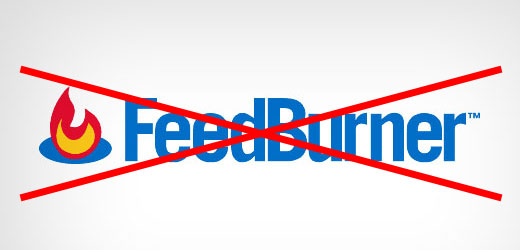
FeedBurner ist Googles RSS-Feed-Verwaltungsdienst, auf den sich viele Blogger vor einigen Jahren verlassen haben (Was ist RSS?). Obwohl Google es noch nicht abgeschaltet hat, gibt es seit einiger Zeit Gerüchte, dass Google es abschalten wird.
FeedBurner hat seit Menschengedenken keine Funktionen oder Updates mehr erhalten. Die FeedBurner-API wurde abgeschaltet. Sie haben auch die Funktion "Adsense for Feeds" eingestellt. All dies geschah im Jahr 2012.
Warum schreiben wir also jetzt darüber – zwei Jahre später?
Nun, weil wir immer noch E-Mails von Benutzern bezüglich FeedBurner erhalten. In den letzten 30 Tagen hat unser alter FeedBurner-Einrichtungsleitfaden über 3500 einzelne Besucher über Suchmaschinenverkehr erhalten. Da FeedBurner keinen Support hat, haben wir Dutzende von Fehlerberichten und Supportanfragen erhalten.
Wir möchten alle betroffenen Benutzer auf einen aktuelleren Artikel verweisen.
FeedBurner-Alternativen
Neben Abonnentenanalysen und der Möglichkeit, mit Adsense Geld zu verdienen, bot FeedBurner zwei Hauptfunktionen, die Blogger liebten.
- FeedBurner bot Bloggern eine bessere Möglichkeit, ihren RSS-Feed anzuzeigen, und bot den Benutzern Freigabeoptionen.
- FeedBurner bot eine kostenlose und einfache Möglichkeit für Benutzer, Ihren Blog per E-Mail zu abonnieren.
Werfen wir einen Blick darauf, wie wir FeedBurner durch bessere Alternativen ersetzt haben.
Bei WPBeginner verwenden wir standardmäßige WordPress-Feeds und verwalten sie selbst. Die Verwendung von standardmäßigen WordPress-Feeds gibt Ihnen die Kontrolle über Ihren Feed. Wir empfehlen unseren Benutzern, sich auf die standardmäßige WordPress-Funktionalität zu verlassen und Feeds selbst zu verwalten. Hier ist der Grund:
Ansprechende Feed-Anzeige mit Freigabeoptionen
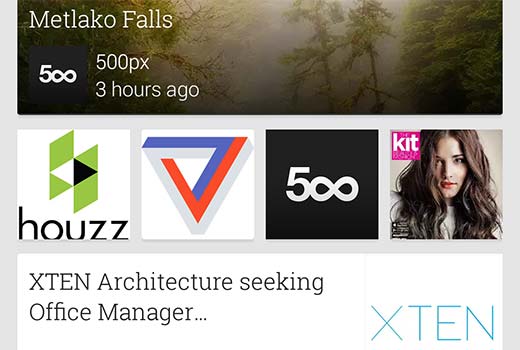
Sie müssen verstehen, dass die Leute Ihre Feed-URL nicht besuchen, um Ihre Inhalte zu lesen. Stattdessen nutzen die meisten Leute Feed-Reader wie Feedly, Flipbook, Googles Newsstand usw. Diese Feed-Reader erledigen bereits die meisten Aufgaben, die FeedBurner vor etwa fünf Jahren erledigt hat.
Wenn Sie FeedBurner für eine bessere Feed-Anzeige und Social Sharing verwenden, dann müssen Sie das nicht mehr tun. Sie können Ihre Benutzer jedoch definitiv darüber aufklären, wie sie Ihren Website abonnieren können.
Blog-Abonnement per E-Mail
Viele Benutzer ziehen es immer noch vor, Blog-Updates per E-Mail zu erhalten, daher ist es entscheidend, dass Sie diese Funktionalität ersetzen.
Während das JetPack-Plugin die nächstgelegene Alternative zur FeedBurner-Abonnementfunktion per E-Mail bietet, empfehlen wir unseren Benutzern dringend, diese nicht zu verwenden.
Warum? Denn genau wie bei FeedBurner können Sie keine exklusiven Updates an Ihre Abonnenten senden. Die einzige Möglichkeit, Ihre Abonnenten zu aktualisieren, besteht darin, einen öffentlichen Beitrag zu veröffentlichen.
Da Sie sich entschieden haben, die Dinge RICHTIG zu machen, empfehlen wir Ihnen, mit dem Aufbau einer E-Mail-Liste zu beginnen.
Professionelle E-Mail-Marketing-Dienste wie MailChimp, AWeber usw. ermöglichen es Ihnen, Blog-Abonnements per E-Mail anzubieten und Ihnen gleichzeitig die volle Leistung einer robusten E-Mail-Marketing-Plattform zu bieten. Sie erhalten bessere Analysen, z. B. wie viele Benutzer Ihre E-Mail geöffnet haben, wie viele darauf geklickt haben usw.
Sie erhalten auch eine höhere Zustellrate, was bedeutet, dass mehr Ihrer Benutzer Ihre Updates erhalten. Nicht zuletzt erhalten Sie Flexibilität und Optionen.
Sie können zum Beispiel mehrere Abonnementoptionen anbieten (tägliche Updates, wöchentliche Updates usw.) – siehe unseren Leitfaden zum Erstellen eines täglichen und wöchentlichen Newsletters.
Wir verwenden MailChimp für unsere Website, und es ist KOSTENLOS für bis zu 2000 Abonnenten.
Jetzt, da wir die Alternativen besprochen haben, sehen wir uns an, wie Sie von FeedBurner wegkommen.
Abschied von FeedBurner
Wenn Sie den E-Mail-Abonnementdienst von FeedBurner genutzt haben, müssen Sie als Erstes Ihre E-Mail-Abonnenten exportieren. Melden Sie sich einfach in Ihrem FeedBurner-Konto an und klicken Sie auf Ihren Feed. Klicken Sie danach auf den Link „Mehr über Ihre Abonnenten erfahren“.
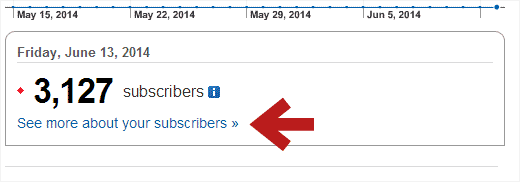
Scrollen Sie auf dem nächsten Bildschirm nach unten zum Abschnitt E-Mail-Abonnementdienste und klicken Sie auf FeedBurner E-Mail-Abonnements. Dies erweitert den Abschnitt und Sie können einen Link zur Verwaltung Ihrer E-Mail-Abonnentenliste sehen. Klicken Sie auf den Link, um Ihre E-Mail-Abonnenten anzuzeigen.
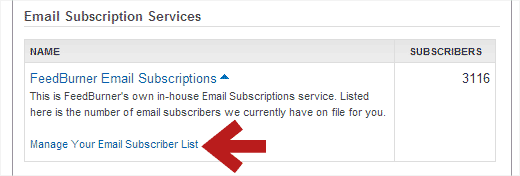
FeedBurner zeigt Ihnen nun die Liste Ihrer E-Mail-Abonnenten an. Über der Liste sehen Sie einen Link CSV exportieren. Klicken Sie einfach darauf, und Ihre Liste wird im CSV-Format heruntergeladen. Sie können diese Datei dann in einen E-Mail-Marketingdienst Ihrer Wahl importieren, z. B. MailChimp, AWeber usw.
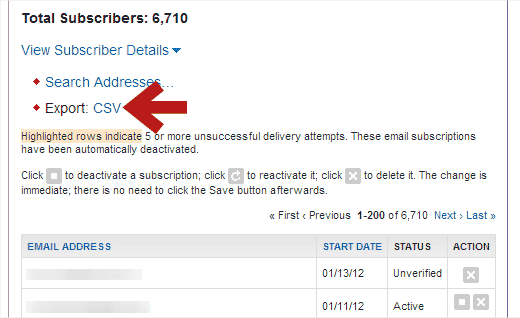
Da wir MailChimp für unsere Website verwenden, zeigen wir Ihnen, wie die Importfunktion in MailChimp funktioniert. Die meisten anderen Anbieter haben einen ähnlichen Prozess.
Als Erstes müssen Sie sich bei Ihrem MailChimp-Dashboard anmelden und eine neue Liste in MailChimp erstellen.
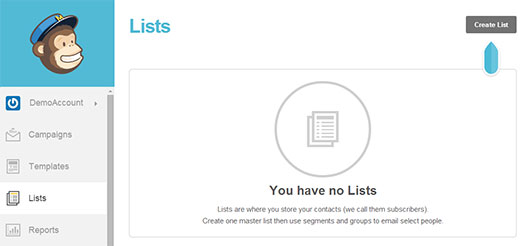
Nachdem Sie eine neue Liste erstellt haben, können Sie Ihre E-Mail-Abonnenten mit der CSV-Datei importieren, die Sie von FeedBurner heruntergeladen haben. Klicken Sie dazu im MailChimp-Dashboard auf das Menü Listen und wählen Sie Ihre neu erstellte Liste aus. Sie gelangen dann zur Listenverwaltungsseite. Dort müssen Sie auf Abonnenten » Abonnenten importieren klicken.
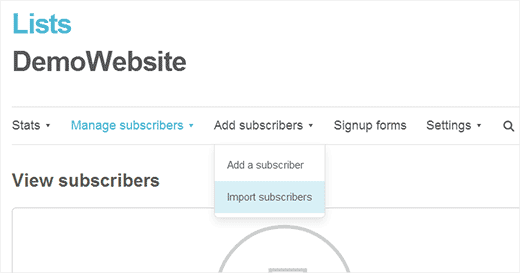
Klicken Sie auf dem nächsten Bildschirm auf die Option „Aus einer CSV- oder TXT-Datei importieren“ und importieren Sie dann die CSV-Datei, die Sie von FeedBurner heruntergeladen haben.
Sobald Sie Ihre Liste importiert haben, müssen Sie eine RSS-zu-E-Mail-Kampagne erstellen.
Verschiedene E-Mail-Marketingdienste haben unterschiedliche Namen für diese Funktionalität. In MailChimp nennen sie es RSS-zu-E-Mail-Kampagne. In AWeber nennen sie es Broadcasts. Googeln Sie einfach nach „Name Ihres E-Mail-Marketingdienstes und Blog-RSS“, und Sie finden ein Tutorial dazu.
Nachdem Sie alles eingerichtet haben, können Sie Ihre E-Mail-Abonnements in FeedBurner deaktivieren, damit Ihre Benutzer keine doppelten E-Mails erhalten. Gehen Sie dazu im FeedBurner auf den Tab "Publicize" und klicken Sie in der linken Spalte auf den Link "Email Subscriptions".
Denken Sie daran, dass Sie beim Übertragen Ihrer E-Mail-Abonnenten auf einen neuen E-Mail-Dienst möglicherweise einige Abonnenten verlieren, aber dies sind inaktive Abonnenten, die Sie wahrscheinlich sowieso nicht wollen.
FeedBurner-Abonnenten zurück zu WordPress-Feed umleiten
Es war üblich, dass Blogger ihre WordPress-Feed-URL zu ihrer FeedBurner-Seite umleiteten. Einige taten dies mit einem Plugin wie FD FeedBurner, während andere die integrierte Funktionalität ihres Themes nutzten und die Schlaueren einen Code-Snippet verwendeten.
Wenn Sie eine der oben genannten Methoden verwenden, um Ihren Standard-WordPress-Feed umzuleiten, dann hören Sie sofort damit auf.
Der beste Weg, um zu überprüfen, ob Sie Ihren Feed umleiten, ist ein Besuch Ihrer RSS-Feed-URL:
http://www.yoursite.com/feed/
Wenn dies zu FeedBurner umleitet, dann haben Sie es nicht behoben.
Schreiben Sie als Nächstes einen Blogbeitrag und bitten Sie Ihre Abonnenten, die URL zu aktualisieren, und erklären Sie ihnen möglicherweise, wie sie Ihren Blog über andere Reader abonnieren können.
Wichtig: Löschen Sie Ihren FeedBurner-Feed NICHT. Es gibt einige Websites, die Ihnen sagen, Sie sollen Ihre FeedBurner-Feeds LÖSCHEN, was angeblich Ihre Abonnenten umleiten wird, aber das tut es nicht. Es ist eine schreckliche Idee, und Sie werden Ihre Abonnenten verlieren. Warum?
Denn wenn Sie Ihren Feed löschen, fügt FeedBurner einen neuen Beitrag hinzu, der Ihre Leser darüber informiert, dass Ihr Feed verschoben wurde. Dies aktualisiert die Feed-URL in den Feed-Readern Ihrer Benutzer nicht automatisch. Wenn der Benutzer innerhalb von 15 Tagen keine Maßnahmen ergreift, verlieren Sie diesen Abonnenten für immer. Darüber hinaus kann nach 30 Tagen ein Konkurrent Ihre FeedBurner-URL beanspruchen und alle Benutzer, die ihre Feeds nicht aktualisiert haben, erhalten seine Updates.
Löschen Sie Ihre FeedBurner-Feeds NICHT noch einmal.
Schreiben Sie einfach einen Blogbeitrag, um Ihre Leser darüber zu informieren, dass sie ihre URLs aktualisieren sollen. Schulen Sie sie mit Ressourcen, wie sie dies tun können.
Lassen Sie den Feed danach einfach einen langsamen Tod sterben.
Auf diese Weise erhalten diejenigen, die Ihre Feed-URL in ihrem RSS-Reader nicht aktualisieren, weiterhin neue Inhalte, aber alle Ihre neuen Leser abonnieren auf die richtige Weise.
Erstellen Sie Abonnementformulare, eine Abonnementseite und mehr
Jetzt, da Sie Ihre E-Mail-Liste erstellt und auf die Standard-WordPress-Feed-URL zurückgefallen sind, sollten Sie entsprechende Updates auf Ihrer Website vornehmen, z. B. alle Erwähnungen der FeedBurner-URL entfernen, Ihre E-Mail-Anmeldeformulare aktualisieren usw.
Für das Hinzufügen von Anmeldeformularen zu Ihrer Website empfehlen wir die Verwendung von OptinMonster. Es ermöglicht Ihnen, effektive Opt-in-Formulare zu erstellen, wie z. B. Seitenleisten-Anmeldeformulare, Formulare nach Beiträgen, schwebende Fußzeilenleiste, Slide-ins, Lightbox-Popups usw.
Wir verwenden es auf unserer Website und es hat uns geholfen, unsere E-Mail-Liste um 600 % zu vergrößern.
Als Nächstes möchten Sie wahrscheinlich eine Abonnementseite erstellen, auf der Leser sehen können, wie sie Ihren Website abonnieren können.
Da Sie den Standard-WordPress-Feed verwenden, haben Sie viele Flexibilitäts- und Anpassungsoptionen.
Sie können Thumbnails zu Ihren RSS-Feeds hinzufügen, anderen benutzerdefinierten Inhalt zu RSS-Feeds hinzufügen oder Sie können komplett eigene benutzerdefinierte RSS-Feeds erstellen.
Eine weitere praktische Funktion, die in WordPress integriert ist, sind kategorispezifische Feeds. Sie können Ihren Benutzern erlauben, einzelne Kategorien mit einem RSS-Feed für Kategorien zu abonnieren. Lesen Sie unseren Artikel über wie Sie Benutzern erlauben, Kategorien in WordPress zu abonnieren.
Wir hoffen, dieser Leitfaden hat Ihnen geholfen, einen Weg zu finden, mit dem Ende von FeedBurner umzugehen und zu besseren Optionen überzugehen. Wir empfehlen Ihnen dringend, die Verwendung von FeedBurner einzustellen.
Wenn Ihnen dieser Artikel gefallen hat, abonnieren Sie unseren YouTube-Kanal für weitere WordPress-Video-Tutorials. Sie können uns auch auf Twitter und Google+ folgen.

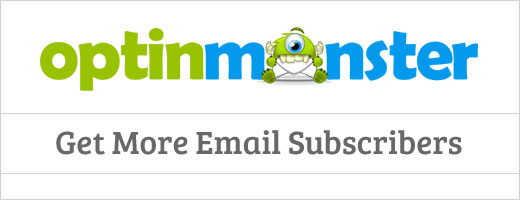




Andrew Blackman
Sehr nützlich, danke! Ich habe mich schon in der Zeit vor Google bei Feedburner angemeldet und bin aus Bequemlichkeit all die Jahre dabei geblieben. Endlich nehme ich mir die Zeit, mich davon zu lösen, und dieser Leitfaden ist genau das, was ich brauchte.
Ryan
Feedburner erlaubt jetzt eine permanente Weiterleitung beim Löschen eines Feeds. Es gibt kein 30-Tage-Fenster mehr.
Ankit Dhadwal
Ich habe andere RSS-Plattformen wie Alltop gesehen. Können Sie bitte ein Tutorial dafür posten? Ich habe Schwierigkeiten, herauszufinden, wie man es benutzt. Andere könnten es auch nützlich finden.
Danke
WPBeginner Support
Hallo Ankit,
Bitte sehen Sie sich unseren Leitfaden an Was ist RSS und wie benutzt man RSS in WordPress?
Admin
Leslie Myricks
Hallo,
Ich habe mich kürzlich bei Feedburner angemeldet. Ich habe dann andere Dienste aufgerufen, um meine Blog-Infos einzugeben. Jedes Mal, wenn ich sie in Feedage eingegeben habe, erhielt ich eine Meldung, dass es nicht funktionierte. Es hieß, ich solle die URL nehmen und sie in die Suche eingeben. Wenn mein Feed angezeigt wurde (was er tat), sollte mir das zeigen, dass ich die richtige URL habe. Wenn ich jedoch versuche, sie bei anderen Diensten einzureichen, erhalte ich dieselbe Meldung. Ich verstehe es nicht. Vielleicht können Sie mir Ratschläge geben. Danke!
Coach Maria
Well, I’ve decided to use feedburner for what it’s worth I do have an ezine, too. I tried Jetpack’s version of subscribing and actually liked it since people get new posts delivered without me having to do anything.
I do have an ezine, too. I tried Jetpack’s version of subscribing and actually liked it since people get new posts delivered without me having to do anything.
Was ich sagen würde ist, dass WENN Ihre ideale Zielgruppe RSS-Feeds mag (wie meine anscheinend), dann nutzen Sie sie. Wenn nicht, dann nicht.
Anne
Das Hauptproblem, das ich sehe, ist die Schwierigkeit, von einem kostenlosen Dienst zu einem kostenpflichtigen Dienst zu wechseln. Website nach Website spricht über MailChimp und andere Dienste, die kostenlos sind, aber das gilt nur, wenn Sie eine kleine Anzahl von Abonnenten haben. Gleichzeitig erzählen uns diese Blogs, wie wir unsere Abonnenten STÄNDIG wachsen lassen sollten. Das bedeutet, dass wir den "kostenlosen" Dienst schnell überwachsen werden.
Was dann etwa 40 US-Dollar oder mehr pro Monat kosten würde.
Könntest du einen Artikel über wirklich KOSTENLOSE RSS-zu-E-Mail-Programme wie Feedburner schreiben? Oder gibt es vielleicht einen kostenpflichtigen Dienst, der nicht ein Vermögen kostet, wenn man mehr als 2000 Abonnenten hat?
Danke!
Don
99% der RSS-Feeds werden nicht gelesen, sie existieren heute nur zu SEO-Zwecken. Sie verwenden Feedburner, weil Google es besitzt. Punkt.
Leslie
feedburner hat meinen ursprünglichen Feed zu
Ich weiß, Sie sagten, ich soll es nicht löschen, aber ich habe hier leider keine Abonnenten. Ich verwende jedoch den obigen RSS-Feed für mein Mailchimp-Konto. Ist das leicht zu beheben? Macht es etwas aus, wenn ich den obigen Feed lösche und zu meinem ursprünglichen von WordPress zurückkehre?
WPBeginner Support
Hallo Leslie,
Wenn Sie Ihren FeedBurner-Feed verwendet haben, um Ihre Beiträge per E-Mail an Ihre MailChimp-E-Mail-Liste zu senden, können Sie die Integration bearbeiten und den FeedBurner-Feed durch Ihren WordPress-RSS-Feed ersetzen.
Admin
malcolm
Ich möchte Feedburner oder seine Alternativen nicht, da ich keinen Nutzen für sie habe, aber ich erhalte ständig eine Nachricht von Feedburner mit einer Art Glücksspiel-Link. Wie kann ich alle Feedburner-Links stoppen? Ich habe sie nie abonniert und möchte sie daher stoppen. Bitte helfen Sie
p.s. Ich habe kein Konto bei ihnen.
WPBeginner Support
Hallo Malcolm,
Wenn Sie dies im Kommentarbereich Ihrer WordPress-Website erhalten, dann werden diese als Trackbacks bezeichnet. Sehen Sie sich unseren Leitfaden an, wie Sie WordPress Trackback-Spam stoppen.
Wenn Sie sie per E-Mail erhalten, melden Sie sie als Spam und Ihre E-Mail-Filter beginnen, diese E-Mails in den Spam-Ordner zu verschieben.
Admin
toni
WordPress Feed verlangt von Benutzern, ein WordPress-Konto zu erstellen.
Das ist zu viel Aufwand. Die meisten werden das nicht durchziehen. Selbst bei Feedburner ist die Eingabe der E-Mail-Adresse, des Codes und einer Bestätigungs-E-Mail für die meisten zu viel. Gibt es eine Option mit Facebook?
Thomas
Ich weiß nicht, ob diese Kommentar-Threads noch überwacht werden, aber ich habe mit Feedburner ganz am Anfang angefangen und steige nun endlich um. Das Problem ist, dass ich es zur Verfolgung von Podcast-Downloads verwende. Was ist eine gute Alternative?
David P
Bitte helft mir. Ich bin neu bei WordPress und all diesem RSS-Kram und finde das alles sehr verwirrend. Bitte helft mir, das zu verstehen. Vielleicht ein Artikel, der für echte WordPress-Anfänger alles über RSS vereinfacht, von dem, was es ist, bis hin zur Verwendung und Einrichtung in WordPress, RSS-Feed, RSS-Feed-Abonnements und all dem Drum und Dran... wäre sehr willkommen.
Ich richte gerade eine neue WordPress-Seite ein, die eine bestehende Live-WordPress-Seite ersetzen wird. Aber bevor ich mit dem Einrichten von RSS-Abonnements oder einem neuen RSS-Feed oder RSS, was auch immer, für die neue Seite beginne, muss ich wohl feststellen, ob die aktuelle Seite all dies bereits hat, vielleicht ein zugehöriges Feedburner-Konto oder überhaupt Abonnenten. Wie mache ich das? Das WP-Theme, das ich verwende, hat ein Newsletter-Abonnement-Widget, das in seinen Einstellungen die Option enthält, eine Feedburner-URI einzugeben. Wenn ich mich nicht um Feedburner kümmern sollte, dann sollte ich mich vielleicht auch nicht um dieses Widget kümmern. Vielleicht sollte ich es einfach durch ein Widget von Mailchimp ersetzen und falls die aktuellen Abonnenten des alten RSS-Feeds verloren gehen, dann werde ich diese Brücke überqueren, wenn ich sie erreiche, aber zuerst... wie fange ich an?
WPBeginner Support
Bitte lesen Sie unseren Leitfaden für Anfänger: Was ist RSS? Wie benutzt man RSS in WordPress?
Admin
monique
Hallo Syed und Team, euer Artikel handelt hauptsächlich davon, wie man von Feedburner wegkommt. Könnt ihr einen Artikel darüber schreiben, wie man einen RSS-Feed einrichtet, was er ist und wie er mit Aweber usw. funktioniert? Ich verstehe immer noch nicht, wie er sich vom Abonnieren per E-Mail unterscheidet, wenn RSS sowieso eine E-Mail sendet. Ich fange gerade erst an und brauche die Sachen zum Weggehen von Feedburner nicht, und das hat mich sehr verwirrt, was ich jetzt tun soll. Danke!
WPBeginner Support
Hallo Monique,
RSS it self does not send email to subscribers when you publish a new article. For that you will need an email service. The email service provider then uses your WordPress RSS feed to fetch articles and automatically email them to your subscribers. Hope this helped, let us know if you have more questions.
Admin
Erin
Ich habe das Gefühl, ich verpasse hier etwas. Ich bin vor Jahren von Feedburner weggegangen, als sie zum ersten Mal ankündigten, dass sie die API nicht mehr aktualisieren würden. Ich bin zu Feedblitz gewechselt und betreibe diesen Feed über Mailchimp in einer RSS-Kampagne.
Das Problem, das ich habe und wie ich auf diesen Beitrag gestoßen bin, ist, dass Feedblitz ein 1×1 Pixel großes Bild in den Feed einfügt und Mailchimp es in ein 600×600 Pixel großes Bild umwandelt, das meinen Feed-Inhalt auf der Seite nach unten verschiebt. ICH suche also nach Alternativen. Aber ist es überhaupt noch üblich, den Wordpress-Feed über einen RSS-Dienst laufen zu lassen? Kann ich den gesamten RSS-Dienst überspringen und die domain.com/feed direkt über Mailchimps RSS-Kampagne für automatische Sendungen laufen lassen?
Danke im Voraus!
WPBeginner Support
Ja, Sie können den Standard-WordPress-RSS-Feed über die RSS-to-Email-Kampagne von MailChimp verwenden.
Admin
Ron
Eine Sache, die ich an Mailchimp hasse, ist, dass meine physische Adresse und E-Mail-Adresse in der endgültigen Bestätigungsnachricht an Abonnenten angezeigt werden. Ich habe das dem Kundenservice mitgeteilt, aber es ist Teil der Anti-Spam-Richtlinie. Die Adresse sollte aus verschiedenen Gründen vertraulich behandelt werden.
Ich mag auch das Captcha nicht... es gibt keine Möglichkeit, diese Funktionalität zu deaktivieren. Es ist eine Qual und kann Leute davon abhalten, sich anzumelden.
Vince
Ich stimme vollkommen zu. Ich möchte von Mailchimp wechseln, bevor meine Liste anfängt zu wachsen.
Candice
Hallo. Ich bin 3 Wochen dabei, meinen ersten Blog auf WP zu erstellen, und habe mich nicht so sehr um den Erwerb von E-Mail-Listen gekümmert, sondern eher um das Einbringen von Inhalten… Ich habe dieses Plugin namens Ultimate Social Media Plus heruntergeladen… Es kommt auch mit dieser Aufforderung, die Leser bittet, neue Beiträge zu abonnieren… Wie unterscheidet sich das von MailChimp? Das WP hat auch ein Widget, mit dem ich eine Abonnementbox auf den Seiten platzieren kann… wie unterscheiden sich diese wieder von diesen E-Mail-Diensten, über die ihr sprecht? Ich habe sehr wenig technologischen Hintergrund, hoffentlich ist meine Frage nicht zu dumm. Danke im Voraus!!!
WPBeginner Support
Bitte werfen Sie einen Blick auf unseren Leitfaden Warum Sie sofort mit dem Aufbau Ihrer E-Mail-Liste beginnen sollten.
Admin
Dan Stafford
Ich frage mich, wie ich die Podcast-Listing-Unterstützung und die Pingshot-Dienste von Feedburner ersetzen kann.
ikomrad
Dasselbe hier. Ich beziehe die meisten meiner Nachrichten von Feedly und möchte mich dort registrieren, damit, wenn jemand meinen Blog in Feedly sucht, er ihn finden und meinen RSS-Feed abonnieren kann.
Gibt es eine Möglichkeit, das zu tun?
WPBeginner Support
Hallo ikomrad, schauen Sie sich unseren Leitfaden an wie Sie Ihren WordPress RSS-Feed optimieren. Er enthält Tipps zur Optimierung Ihrer WordPress-Website für Feedly, damit Ihr Blog in Feedly prominenter angezeigt wird.
Admin
Henning Uhle
Toller Beitrag. Danke. Aber eine Sache ist seltsam.
Mailchimp funktioniert wie ein Zauber. Ich verwende RSS-gesteuerte Kampagnen, die einmal täglich zu einer bestimmten Zeit E-Mails an meine Abonnenten senden. Wenn WordPress RSS zu dieser Zeit nicht verfügbar ist, wird keine E-Mail gesendet. Und die Mailchimp-Leute haben mir geraten, Feedburner oder andere RSS-Caching-Dienste zu verwenden, um dieses Problem zu vermeiden.
Und da Feedburner nicht gestorben ist, benutze ich es wie von Mailchimp empfohlen. Jetzt denke ich darüber nach, zu Google Newsstand zu wechseln, um einen RSS-Caching-Dienst zu haben, der zukunftssicherer ist. Aber ich bin mir nicht sicher, ob Mailchimp damit funktioniert. Aber ich werde es versuchen.
Viele Grüße, Henning
shan
Es gibt derzeit keine Alternative zu Feedburner. Weil dies ein kostenloser Dienst ist. Und E-Mails landen nie im Spam-Ordner. Wenn Sie viel Geld für E-Mail-Abonnements ausgeben möchten, schließen Sie den Feedburner-Dienst und suchen Sie nach einer Alternative.
Ja, sicher
Natürlich. FB wird von Google gesendet, daher ist es immer noch der beste Weg, E-Mails zu versenden.
Alana
Vielen Dank für all die Tipps! Ich bin gerade zu MailChimp gewechselt und das hat sehr geholfen!
andrea
Ich bin vor etwa einem Monat zu Aweber gewechselt. Als wir meine Abonnenten in Aweber importierten, gab es keine Namen, nur E-Mail-Adressen. Erfasst Feedburner überhaupt Vornamen? Wenn nicht, oh je! Ich bin mir nicht sicher, wie ich zurückgehen und die Namen von 600 Abonnenten erfassen kann!
WPBeginner Support
Sie können den Aweber-Support kontaktieren. Möglicherweise müssen Sie alle Ihre Benutzer auffordern, ihr Abonnement erneut zu bestätigen.
Admin
Ganesh
Guter Beitrag, danke für die Weitergabe von Feedburner-Informationen.
Kady
Vielen Dank für diesen Blogbeitrag! Er war so hilfreich, als ich alle meine E-Mail-Posts von Feedburner und Jetpack auf Mailchimp umgestellt habe!
Nostromov
Ugh, ich weiß nicht, ob ihr Jungs unwissend seid – oder was?! FeedBurner ist tot und weg... Seine Domains, feedburner.com/ & feedburner.org/, sind geparkt; außerhalb von Google existiert es nicht mehr!..
Vielleicht wäre es gut, den Artikel zu aktualisieren oder etwas anderes zu tun?? :))
Josh
Diese Domains wurden vor etwa 5-6 Jahren deaktiviert, nachdem Google die Übernahme des Feedburner-Dienstes abgeschlossen hatte. Feedburner ist jetzt unter feedburner.google.com zu finden.
Jennifer Harry
Ich benutze ein Newsletter-Plugin, um Newsletter zu versenden, habe aber ein Problem damit, zu verstehen, was ich tun muss, um regelmäßige Newsletter zu versenden. Ich nehme an, ich muss mich einfach darauf konzentrieren und es erledigen, aber es ist schwierig, wenn man eine Million anderer Aufgaben zu erledigen hat!
Lance McGrew
E-Mail-Abonnements werden altmodisch oder sind es bereits geworden. Sofortige Push-Benachrichtigungen sind der neue Weg. Bessere sofortige Befriedigung, keine Probleme mit Ihren Feeds, die im Spam-Ordner landen. Erregen Sie die Aufmerksamkeit Ihrer Abonnenten, auch wenn ihre E-Mail-Client-App nicht geöffnet ist. Das Problem ist, dass ich keinen klaren Weg finde, sofortige Push-Benachrichtigungen mit WordPress-Posts zu integrieren. Feedburner 30-Minuten-Push ist unzureichend. Boxcar2 erfordert, dass der Benutzer manuell eine benutzerdefinierte URL eingibt. Kein offensichtlicher Weg, Abonnenten die Auswahl zu ermöglichen, welche Feeds oder Benachrichtigungen sie auf ihre mobilen Geräte pushen möchten.
Vince
Bin mir nicht sicher, ob ich zustimme. Moden kommen und gehen, aber E-Mail-Listen sind im iM immer noch König.
Kimm Boes
Hallo, ich suche Hilfe bezüglich eines Feed-Problems. Ich habe kürzlich einen Blog übernommen, meinen zweiten, und ein neues Theme installiert. Ich habe auch die Feedburner-Abonnenten nach Mailchimp exportiert und eine RSS-Kampagne in Mailchimp eingerichtet, um meine neuen Beiträge jeden Morgen an meine Abonnenten zu senden. Das Problem ist, dass mein Feed nicht aktualisiert wird, sodass Mailchimp keine Benachrichtigung erhält, dass neue Inhalte veröffentlicht wurden, und die E-Mail nicht versendet. Soweit ich weiß, kommt mein Feed immer noch von Feedburner, aber wenn ich mich in diesem Konto anmelde, werden alte Inhalte von vor der Übernahme des Blogs angezeigt. Wenn ich auf "Resync" klicke, wird er aktualisiert, aber er springt zurück. Können Sie helfen?
Daniel Boswell
Dieser Kommentar-Thread scheint etwas alt zu sein, aber für diejenigen, die sich nach MailChimp erkundigen, funktioniert die RSS-zu-E-Mail-Funktion in der kostenlosen Version. Es gibt auch ein paar kostenlose RSS-E-Mail-Vorlagen zur Auswahl, die alles bereits eingerichtet haben. Wenn Sie den RSS-zu-E-Mail-Einrichtungsprozess durchlaufen, können Sie in einem der Schritte Ihre Vorlage auswählen. Fügen Sie einfach Ihr Logo oder Ihren Namen als Text auf dem Banner hinzu, nehmen Sie beliebige Farbänderungen vor und passen Sie die Schriftart an, wenn Ihnen das, was dort ist, nicht gefällt, und Sie sollten gut zurechtkommen.
Chaz DeSimone
Daniel, danke fürs Posten, auch wenn „dieser Thread alt zu sein scheint“. Ich muss RSS und Mailchimp installieren, und deine beiden Punkte, dass RSS to Email in der kostenlosen Version funktioniert und dass ich eine Vorlage auswählen und einige einfache Anpassungen vornehmen kann, sind für mich ausschlaggebend. Vielen Dank. (Die Website, die ich jetzt baue, handelt von Stummfilmen von vor 100 Jahren – das Einfädeln von Film auf einem Powergraph von 1906 ist ein „alter Thread“!)
Jim
Sie empfehlen die Verwendung des Standard-WP-RSS-Feeds, aber er ist fehlerhaft und generiert keine funktionierenden XML-Dateien. (WP 4.2.2)
Eli
Hallo,
Dein Blog ist sehr gut!
Kleine Frage, ich benutze WordPress zum Erstellen von Blogs und habe ein RSS-Programm von WP. Wenn ich auf das RSS-Symbol auf meiner Website klicke, wird der RSS-Feed im Internet Explorer gut angezeigt, aber in Chrome nicht. Warum? Wie kann ich das beheben, damit es auch in Chrome angezeigt wird?
Ich freue mich auf deine Antwort & danke!
Eli Kassel.
Lucky Bhumkar
Wertvollster Beitrag. Danke, dass Sie mich gewarnt haben, bevor ich in die Falle von Feedburner geraten bin.
Sonia
Ich bin kürzlich zu MailChimp gewechselt und möchte FeedBurner jetzt komplett aufgeben, aber ich habe keine Ahnung, wie ich das machen soll...
Da FeedBurner jetzt eine permanente Weiterleitungsoption anbietet, würden Sie sagen, dass das Löschen des Feeds eine akzeptable Möglichkeit wäre, den Feed zur ursprünglichen Quelle, d. h. WordPress, zurückzuleiten, oder müsste ich trotzdem zusätzliche Schritte unternehmen, selbst wenn ich das tun würde? Es ist Jahre her, seit ich angefangen habe, FeedBurner zu benutzen, und jetzt weiß ich nicht mehr, wie ich das rückgängig machen kann. Ich weiß mit Sicherheit, dass ich kein Weiterleitungs-Plugin verwendet habe und die header.php-Datei nicht geändert hätte, da ich keine Ahnung habe, wie das geht...
Ich bin ratlos, wie ich meinen Feed wiederherstellen und FeedBurner loswerden kann... Bitte helft mir!
suryatejaaaa
aber das Problem mit Mailchimp ist, dass wenn wir die E-Mails über Mailchimp senden, sie direkt im Promotions-Tab landen und sich niemand darum kümmert. Wenn Sie Vorschläge haben, sagen Sie es mir bitte.
Tri Wahyudi
For me Feedburner remain useful for capturing traffic to my blog
Lukas Brandt
Was ist mit Feedpress.it?
Nancy Ward
Ich habe 50 E-Mail-Abonnenten, die auf Feedburner gelistet sind und E-Mail-Updates erhalten. Ich habe auch 740 registrierte Benutzer, die nicht als Abonnenten auf Feedburner gelistet sind und daher keine E-Mails erhalten. Welche Optionen habe ich, um von Feedburner zu einer anderen E-Mail-App zu wechseln, um die registrierten Benutzer einzubeziehen?
Quinn W
Vielen Dank dafür! Ich habe eine Frage – Sie erwähnten, dass man mit Mailchimp RSS to Email eine Kampagne für eine Blog-Kategorie oder einen Tag zusammenstellen kann. Ich habe beides versucht, aber Mailchimp scheint es jedes Mal zu meinem Hauptblog-Feed zurückzusetzen. Haben Sie eine Erklärung dafür? ~Quinn
Mary A. Axford
Mein Blog nutzt Feedburner, damit Leute per E-Mail abonnieren können. Sehr früh (Blogstart Mitte 2012) konnte ich mich anmelden. Dann erhielt ich jedoch die Meldung, mich anmelden zu müssen, um mein Feedburner-Konto zu beanspruchen, und die ID und das Passwort funktionierten nicht. Der einzige Weg, Hilfe zu bekommen, war, in einem Google-Forum zu posten, und bisher hat Google meine und die Anfragen vieler anderer Leute ignoriert. Irgendwelche Ideen? Ich möchte meine E-Mail-Abonnenten nicht zwingen, etwas anderes zu abonnieren. Danke!
WPBeginner-Mitarbeiter
MailChimp hat eine Funktion namens RSS to Email.
Kennis Wong
MailChimp ist nicht gerade eine Alternative zum E-Mail-Abonnement von Blog-Posts, oder? Soweit ich weiß, müssen Sie manuell eine E-Mail erstellen, um sie an Ihre Abonnenten zu senden, wenn Sie MailChimp verwenden, während in Wordpress Jetpack Ihre Abonnenten automatisch eine E-Mail-Benachrichtigung für jeden neuen Beitrag erhalten. Ich sehe, dass die beiden Dienste sich ergänzen (obwohl es für die Leser verwirrend sein könnte, wenn Sie zwei separate Anmeldungen haben). Korrigieren Sie mich, wenn ich mich bei MailChimp irre.
Anya
Die kostenpflichtige Version von Mailchimp kann so programmiert werden, dass sie den RSS-Feed eines Blogs abruft und automatisch E-Mails erstellt. Sie können auch gestylt und gebrandet werden. Es ist ziemlich einfach und erfordert etwas Testen, aber es ist möglich.
Doreen
Ich glaube, ich habe versehentlich zwei Feedburner-Konten registriert, aber ich kann nur eines finden. Können Sie mir sagen, wie ich das andere Konto finden kann, damit ich Feedburner aufgeben und meine Abonnenten übertragen kann?
WPBeginner-Mitarbeiter
Der beste Weg, dies herauszufinden, ist, die Schritte, die Sie bei der Implementierung von FeedBurner unternommen haben, zurückzuverfolgen und sie einfach rückgängig zu machen.
WPBeginner-Mitarbeiter
Gehen Sie zur Seite Plugins und prüfen Sie, ob ein Plugin installiert ist, das Feedburner im Namen oder in der Beschreibung hat. Wenn Sie ein solches Plugin finden, deaktivieren Sie es.
Überprüfen Sie auch die header.php-Datei Ihres Themes und suchen Sie nach einer Zeile, die Ihre Feedburner-Feed-URL enthält.
Überprüfen Sie abschließend die functions.php-Datei Ihres Themes. Suchen Sie nach einem Codeblock, der die URL Ihres Feedburner-Feeds enthält.
Jacqueline
Das einzige Plugin, das sich auf Feedburner bezieht, ist WP Subscriber Form. Derzeit ist es deaktiviert. Ich werde ehrlich sein und sagen, dass ich keine Ahnung habe, wie ich meine .php-Dateien finde, geschweige denn sie bearbeite. Ich bin ein absoluter Neuling in diesen Dingen und schätze jede Hilfe.
Jacqueline
Ich habe diesen Beitrag genau einen Tag nach der Implementierung von Feedburner gefunden. Ugh! Ich bin sehr neu im Bloggen und bei den technischen Dingen, d.h. beim Bearbeiten von Dateien, FTP, CSS und dem Rest. Können Sie mir bitte helfen, alles wieder in Ordnung zu bringen? Ich finde keinen Weg, meine Feeds wieder so umzuleiten, wie sie vor zwei Tagen waren. Ich wäre für jede Hilfe dankbar!
WPBeginner-Mitarbeiter
Ich kann das Problem mit der Angabe Ihrer tatsächlichen Adresse verstehen. Aber Sie müssen diese auch angeben, wenn Sie Ihren Domainnamen registrieren.
Es sei denn, Sie haben eine private Registrierung oder WhoIsGuard gekauft, dann kann jeder Ihre Adresse herausfinden.
Wir haben viele Blogger gesehen, die einfach ihre Hausadresse für ihre MailChimp-E-Mail angegeben haben.
Ich wünschte, ich könnte Ihnen eine bessere Lösung anbieten, aber das ist alles. Sie können JetPack verwenden, aber auch hier stoßen Sie auf dieselben Einschränkungen. Mit FeedBurner waren Sie den Launen von Google ausgeliefert, und jetzt sind Sie den Launen von Automattic ausgeliefert.
Ständig hungrig
Danke für den Artikel. Genau das, wonach ich online gesucht habe.
Ich bin ein neuer Blogger und habe im Moment nichts auf meiner Website zu verkaufen (kein Einkommen). Obwohl ich verstehe, dass MailChimp kostenlos genutzt werden kann, muss ich eine physische Postanschrift angeben, um die Anti-Spam-Gesetze einzuhalten. Das bedeutet, dass ich ein Postfach mieten muss, was Kosten verursacht, die ich jetzt nicht tragen möchte. Andere Plugins/Dienste für E-Mail-Abonnements fragen nicht nach diesen Informationen, aber mir ist bewusst, dass sie ihre eigenen Einschränkungen haben.
Irgendwelche Ratschläge, wie ich vorgehen soll?
Heather Solos
Transparenz, ich arbeite für FeedBlitz.
Native RSS-Feeds funktionieren in den meisten neuen Readern gut, allerdings bieten Dienste wie unserer zusätzliche Funktionen, wie die Möglichkeit, das RSS-Publikum zu messen und Werbung in den RSS-Feed einzufügen, wodurch eine zusätzliche passive Einnahmequelle geschaffen wird.
Wir machen es auch einfach, eigene statische Anzeigen in Ihre RSS-Feeds einzufügen.
Wir bieten auch Live-Support während der Geschäftszeiten.
Ich beantworte gerne alle Fragen, die Sie zu dem Dienst haben.
nur zu Besuch
Feed Demon. Mehr muss man nicht sagen
WPBeginner-Mitarbeiter
Sie müssen keinen Code zu Ihren RSS-Feeds hinzufügen. Die Standard-WordPress-Feeds funktionieren sofort. Wenn Sie jedoch das Gefühl haben, etwas zu Ihren RSS-Feeds hinzufügen zu müssen, gibt es Plugins, mit denen Sie dies tun können. Zum Beispiel können Sie mit WordPress SEO Inhalte hinzufügen, die unter jedem Beitrag in Ihrem RSS-Feed erscheinen.
Wie wir im Artikel erwähnt haben, werden Sie Ihren Feedburner-Feed nicht löschen. Sie werden also diese Abonnenten nicht verlieren und sie werden weiterhin Updates von Ihrer Website erhalten.
Heather Solos
Um dies zu ergänzen, löschen Sie Ihren FeedBurner-Feed nicht, da dies jemand anderem ermöglicht, Ihre Erweiterung zu übernehmen. Ihre Abonnenten, die ihr Abonnement nicht verschoben haben, werden wahrscheinlich nicht bemerken, dass der Feed verstummt ist, bis eines Tages jemand Ihre alte Erweiterung mit etwas Aufregendem wie Erwachseneninhalten oder Pillenwerbung übernimmt. Ich habe das schon oft erlebt.
Doreen
Dies ist ein hilfreicher und zeitnaher Beitrag, da ich schon seit einiger Zeit darüber nachdenke, von Feedburner wegzugehen. Das Einzige, was mich zurückhält, ist, dass Feedburner seit einiger Zeit meine Abonnentenzahl als 1 anzeigt (und ja, ich habe die von Ihnen beschriebenen Schritte befolgt) und ich weiß, dass dies nicht der Fall ist. Hilfe von dort zu bekommen ist fast unmöglich, daher bin ich mir nicht sicher, wie ich das beheben kann. Irgendwelche Ratschläge?